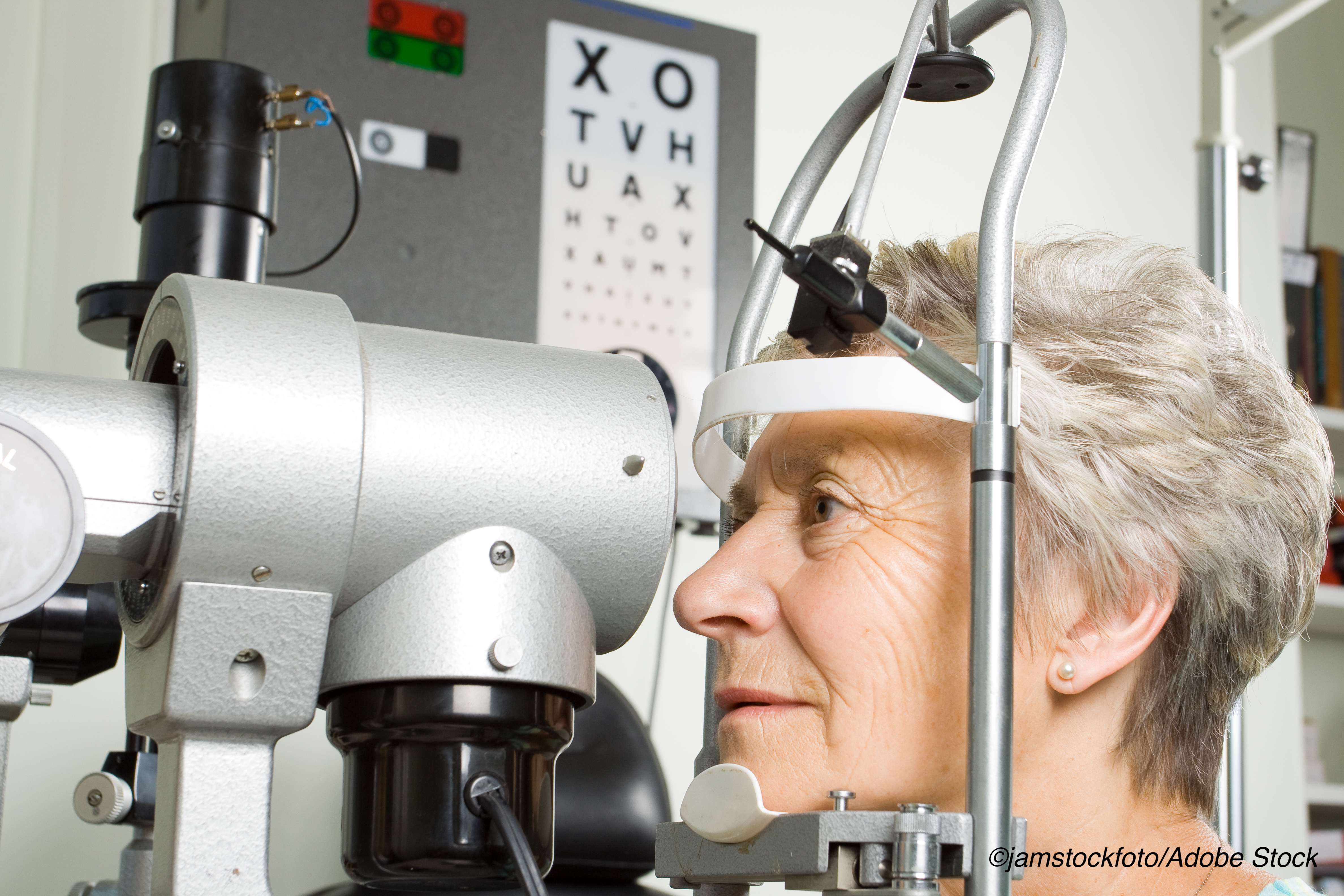Several forms of visual impairment were associated with worse cognitive test scores, a longitudinal cohort study found.
Poor visual acuity and poor stereo acuity at baseline were associated with significant detriments in language and memory test scores, while poor contrast sensitivity was associated with worse scores in language, memory, attention, and visuospatial ability, reported Bonnielin Swenor, PhD, MPH, of Johns Hopkins University in Baltimore, Maryland, and co-authors.
“These findings suggest that the association between vision and cognition differs between visual acuity, contrast sensitivity, and stereo acuity and that patterns of cognitive decline may differ by type of vision impairment, with impaired contrast sensitivity being associated with declines across more cognitive domains than other measures of visual functioning,” they wrote in JAMA Network Open.
The study included 1,202 participants from the Baltimore Longitudinal Study of Aging who had data about visual and cognitive evaluations between 2003 and 2019. The cohort was 50.8% women and 71.0% white, with a mean age of 71.1.
The researchers related three visual measures—visual acuity (how much a pattern must differ in size to be seen), stereo acuity (depth perception), and contrast sensitivity (how much a pattern must vary in brightness to be seen)—to cognitive test results for language, memory, attention, executive function, and visuospatial ability over a mean 6.9-year follow-up. They found:
- Visual acuity: worse baseline function was associated with greater declines in language (β −0.0035, 95% CI −0.007 to −0.001) and memory (β −0.0052, 95% CI −0.010 to −0.001) scores per 0.1 log minimum angle of resolution.
- Stereo acuity: worse baseline function was associated with significant declines on language (β −0.019, 95% CI −0.034 to −0.005) and memory (β −0.032, 95% CI −0.051 to −0.012) scores, with impairment defined as worse than 60 seconds of arc.
- Contrast sensitivity: worse baseline function was associated with greater declines in language (β −0.010, 95% CI −0.014 to −0.006), memory (β −0.009, 95% CI −0.015 to −0.003), attention (β −0.010, 95% CI −0.017 to −0.003), and visuospatial ability (β −0.010, 95% CI −0.017 to −0.002) scores per 0.1 log units.
Findings were similar in sensitivity analyses that excluded vision-dependent tests, suggesting cognitive tests reflected cognitive rather than purely visual impairment.
“Taken together, these results suggest that the association between vision and cognition differs between components of visual function systems and that impaired visual function system components may be important clinical markers of cognitive decline,” wrote Ecosse Lamoureux, PhD, of the Singapore National Eye Center, and co-authors in an accompanying editorial.
The researchers “further highlight the unmet clinical and research need of evaluating other components of the visual function system, apart from visual acuity (the most common clinically assessed element of vision), to investigate the impact of vision and vision-related interventions on cognitive decline,” they added.
A recent review and meta-analysis suggested visual impairment was a risk for cognitive impairment with a possible bidirectional relationship, and that persons with visual impairment were more likely to have any cognitive impairment (cross-sectional and longitudinal ORs of 2.38 and 1.66, respectively) and more likely to have diagnosed dementia (cross-sectional and longitudinal ORs 2.43 and 2.09, respectively).
Visual function components beyond visual acuity are relatively unexplored with respect to contributing to cognitive decline, Lamoureux and colleagues observed.
“Research has focused mostly on one aspect of the visual function system — that is, visual acuity — whereas other components, such as contrast sensitivity, stereo acuity, color vision, and visual fields, all of which decline with age, are relatively unexplored, despite some evidence of their importance in cognitive impairment development,” they wrote.
In the present study, visual measurements were obtained at the first study visit at enrollment. Subsequent visits were at least every 4 years (more frequent evaluation occurred for older participants, with yearly visits for those 80 or older). Cognition was assessed using a comprehensive battery defined in the ongoing database protocol.
“A number of mechanisms have been hypothesized to explain these observed associations between visual functional and cognitive impairments,” the researchers noted.
“A shared neuropathological cause underlying both vision and cognitive impairments, such as microvascular disease, is a possibility,” they continued. “However, our findings were robust to adjustment for known confounders and factors commonly associated with the risk of vascular disease, such as diabetes, hypertension, and smoking.”
“Alternatively, vision impairment may be associated with cognitive decline potentially through conditions known to affect cognition, such as depression, social isolation, loss of cognitively stimulating activities (e.g., reading), and cognitive load (i.e., the greater dedication of cognitive resources to visual processing may be detrimental to other cognitive processes),” they added.
Limitations of the study include the absence of additional visual measurements that may be related to cognitive performance.
“Visual field and color vision were not included, which may limit the study’s main conclusion that impaired contrast sensitivity is associated with declines across several cognitive domains,” the editorialists pointed out. “Future studies investigating the association between the spectrum of visual system function components and cognitive domains are needed to confirm the study’s findings.”
“This information may provide important evidence to support a more comprehensive clinical assessment of the visual function system as part of a public health strategy for early detection and management of cognitive decline in older adults with visual impairment,” they added.
- Several forms of visual impairment were associated with worse cognitive test scores, a longitudinal cohort study found.
- Poor visual acuity and poor stereo acuity at baseline were associated with significant decrements in language and memory test scores, while poor contrast sensitivity was associated with worse scores in language, memory, attention, and visuospatial ability.
Paul Smyth, MD, Contributing Writer, BreakingMED™
This work was supported by the National Institutes of Health through the Intramural Research Program of the National Institute on Aging.
Swenor reported no conflicts of interest.
Lamoureux reported no conflicts of interest.
Cat ID: 130
Topic ID: 82,130,730,130,361,192,925,240



